#fayum portraits
Photo

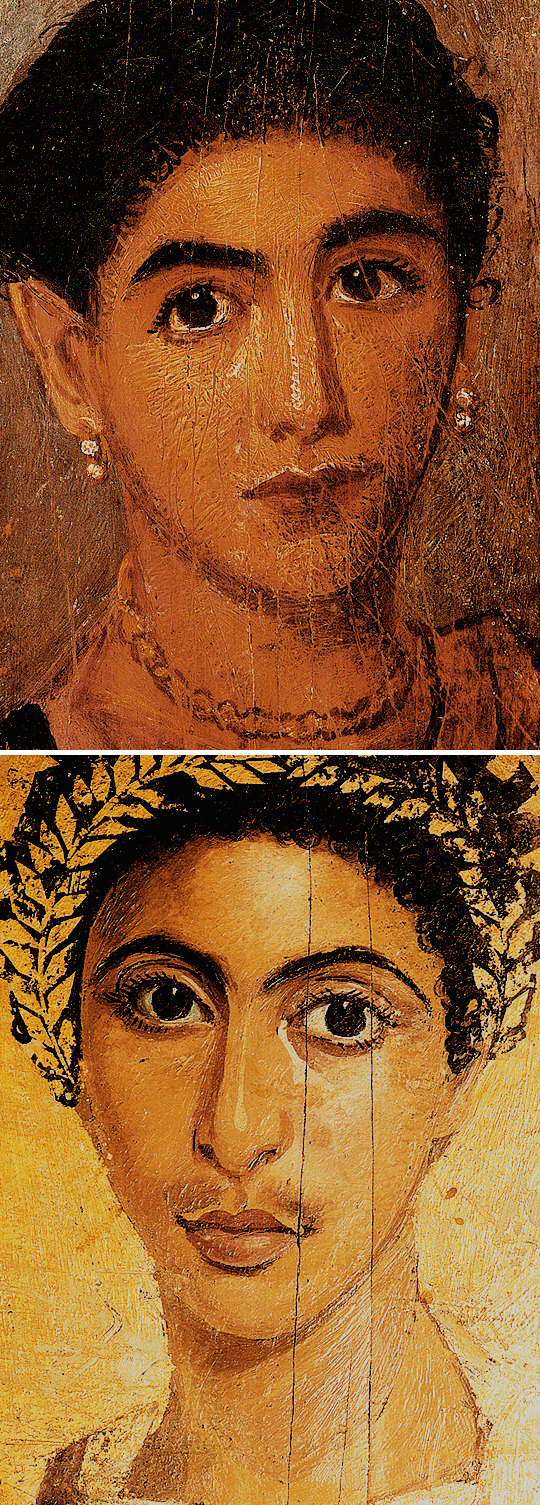




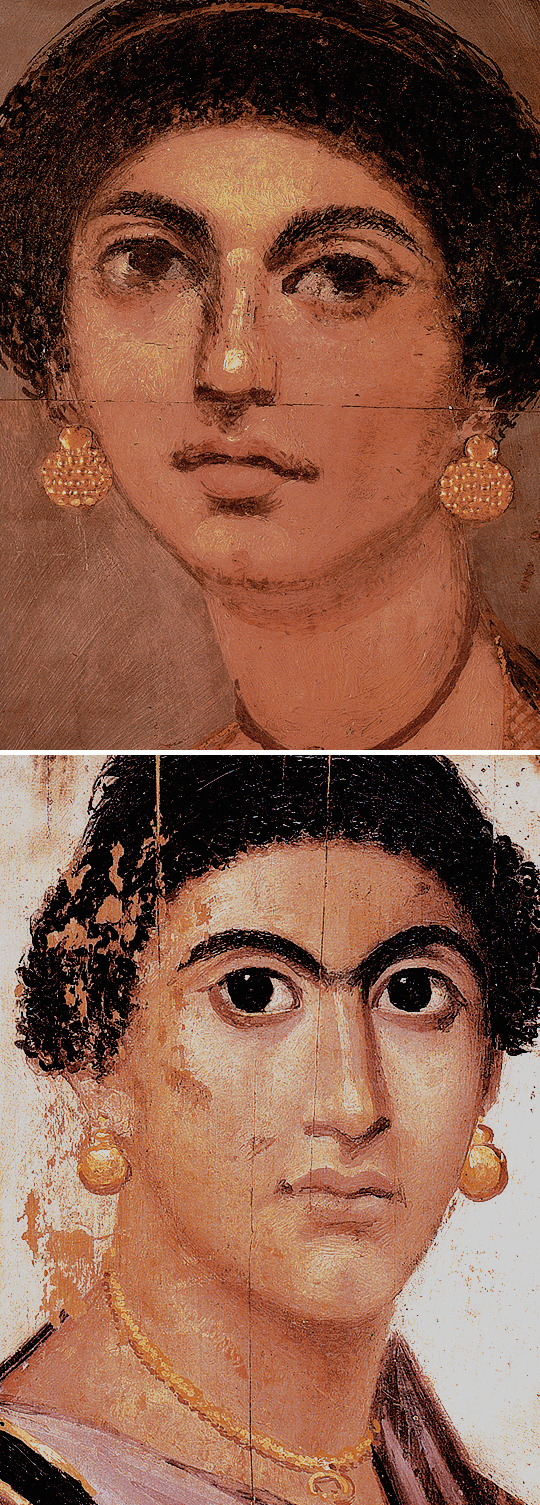

PAINTED MUMMY PORTRAITS OF EGYPTIANS DURING THE ROMAN PERIOD
The painted mummy portraits of Roman Egypt almost uncannily bring before us individuals from about two thousand years ago. The powerful promise of the ancient Egyptian afterlife, the pervasiveness and coherence of Roman culture, and the strong naturalism of the Graeco-Roman painting tradition combined to produce these arresting portraits of the gentility of the towns and cities of Egypt beyond the great metropolis of Alexandria. —Ancient Faces: Mummy Portraits from Roman Egypt (ed. Susan Walker) (1997)
#egypt#ancient egypt#egyptology#archaeology#historyedit#mine#my edit#fayum portraits#roman period#mummy#funerary
3K notes
·
View notes
Text

Mummy Portrait of a Girl, 120-150 AD
Roman Egypt
This lively portrait of a young Roman girl, whose beautiful hair is adorned with a wreath of leaves, is painted on a panel of sycamore wood.
According to the Roman writer Pliny, the leading panel painters were also commissioned to apply polychromy to marble sculptures. We have to imagine ancient sculpture from around 350 BC onwards as being painted in as sophisticated a manner as this mummy portrait.
65 notes
·
View notes
Text

Ancient Egyptian 'Mummy Portraits' From Nearly 2 Millennia Ago
These ancient 'mummy portraits' provide a window into ancient Egyptian life and culture.
In the early first millennium, many mummies in Egypt were affixed with lifelike portraits showcasing the deceased's once-vivid eyes, styled hair and elaborate jewelry. Over the past few centuries, archaeologists have unearthed more than 1,000 of these mummy paintings, largely from the city of Fayum, earning them the name "Fayum portraits."
These well-preserved, mesmerizing portraits still captivate, prompting Allard Pierson, a museum in Amsterdam, to feature nearly 40 Fayum portraits in its exhibit "Face to Face: The People Behind Mummy Portraits," which opened Oct. 6 and runs through Feb. 25, 2024.
The portraits, created during Egypt's Roman period (30 B.C. to A.D. 395), often depict individuals with European heritage, who moved to the area following Alexander the Great's rule, the subsequent Ptolemaic dynasty (305 to 30 B.C.) led by one of his generals and the Roman period, when the empire made Egypt into a province.
The portraits were often painted on wooden panels with the two upper corners cut off so they could be easily inserted into the mummy bandages, over the face of the mummified body, Ben van den Bercken, curator of the Collection Ancient Egypt and Sudan at Allard Pierson saiid.
Below are 12 of the portraits, each revealing hints about the deceased and their culture.
Portrait of Ammonius
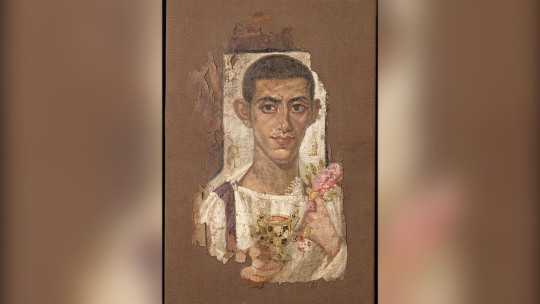
In the restored "Portrait of 'Ammonius,'" painted on linen sometime between A.D. 225 and 250, a young man holds a chalice in one hand and a flower bouquet in the other. The artist gave Ammonius several distinctive features, including large lips, prominent ears, eye bags and strangely curved fingers, according to the book "Mummy Portraits in the J. Paul Getty Museum" (Oxford University Press, 1982).
Pearl earrings

This portrait, painted between A.D. 150 and 200 on wood, shows a young woman with brown doe eyes, a slender nose and thick eyebrows. Pearls, like the ones she wears, are one of the "most ubiquitous" types of earrings in the Fayum portraits, van den Bercken said. Jewelry and hairstyles can help researchers date the portraits, he noted. For instance, women's hairdos could "be very elaborate" and often reflected fashions and trends from Rome itself, "mainly [from] the empress," he said.
However, it's always a question how long it took the fashions of Rome to reach Egypt. In some cases, "something fashionable in Egypt might have already gone out of fashion in Rome itself," van den Bercken said.
Bearded man
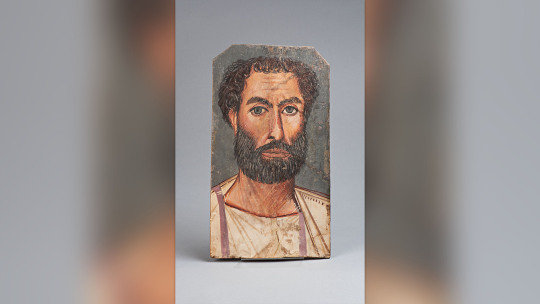
In this portrait, painted on wood sometime between A.D. 175 and 225, we see a curly-haired, bearded man clad in white. The man's beard may mimic the facial hair of Roman emperor Marcus Aurelius (reign 161 to 180), who also sported a beard.
Elegant jewelry

This portrait, painted on wood sometime between A.D. 175 and 200, shows a dark-haired woman wearing a matching necklace and earrings. However, as in other Fayum portraits, it's unclear if it portrays the deceased when they were younger or around the time of death.
In some cases, the portraits were fairly accurate, according to a 2020 study in the journal PLOS One. A team took a CT (computed tomography) scan of a young boy's mummy from Roman Egypt, digitally reconstructed his face and then compared the reconstruction with his portrait. According to an analysis, the portrait made the child look younger than his 3 or 4 years but was otherwise spot-on.
Vivid eyes

This male portrait, painted circa A.D. 250 on limewood, was purchased in the early 1800s by Henry Salt, the British vice-consul in Egypt, making it one of the earliest Fayum portraits recovered in the modern age, according to "Mummy Portraits in the J. Paul Getty Museum."
The earliest record of a Fayum portrait being collected dates to 1615, when a group of the paintings was brought from Saqqara, Egypt, to Europe by the Roman nobleman Pietro della Valle.
Girl with gold wreath

In this portrait, painted on wood between A.D. 120 and 130, we see a young girl wearing a pearl necklace and a golden wreath in her hair. "This wreath is an indication that she 'overcame' death," van den Bercken said.
Man with gold wreath
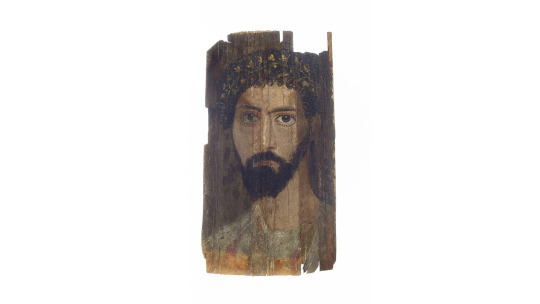
Women weren't the only ones painted with gold wreaths. In this portrait, painted on wood sometime between A.D. 150 and 200, we see a bearded man sporting his own gold laurels.
Realistic portraiture
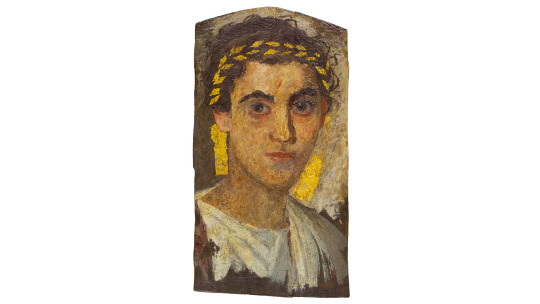
This portrait, painted circa A.D. 150, shows a man clothed in white and wearing a gold wreath. The Fayum portraits' compelling images inspired artists painting icons in the late Byzantine Empire, as well as artists in the late 19th and 20th centuries, according to Allard Pierson. Today, this style is seen as one of the earliest known examples of realistic painted portraiture.
Curly-haired man

This man's beard helped researchers date his portrait to the reign of Emperor Marcus Aurelius. Like others with portraits, the man painted here may have had European roots. Many Greeks and Romans lived in Egypt, first during the Ptolemaic dynasty, which started when one of Alexander the Great's generals took over the region, and later when Rome made Egypt into a province following the death of Cleopatra VII.
Eyes and eyelashes

This portrait, painted on wood between A.D. 300 and 400, shows a woman wearing pearl earrings. "A lot of detail has been put in the composition of eyes and eyelashes," van den Bercken said. A few clues hint that the deceased were upper-middle class or elite, including that many wore ornate jewelry in these portraits. In addition, individuals or their families had to pay an artist for the portrait. "They were not easy to make, not cheap to make resource-wise," van den Bercken said. "The people who ordered them must have had some financial means to do this."
Fancy necklace
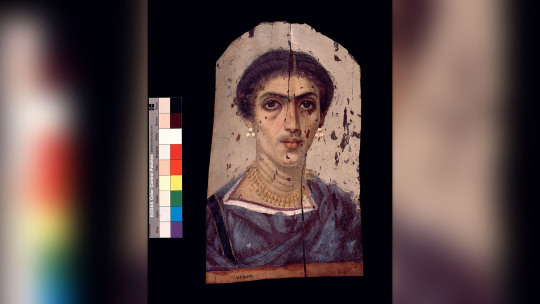
This woman's portrait was painted sometime between A.D. 160 and 190. The majority of known Fayum portraits were found in the 1800s, but in 2022, archaeologists announced that they had discovered more at a cemetery in the ancient city of Philadelphia in Egypt.
Bright-eyed woman

This portrait, painted on wood between A.D. 170 and 200, was found in Egypt in the 1880s, according to "Mummy Portraits in the J. Paul Getty Museum." The woman wears pearl earrings, a necklace, a hot-pink tunic and black clavi, or vertical strips of ornamentation. Her curly hair is drawn into a bun.
By Laura Geggel.
#Ancient Egyptian 'Mummy Portraits' From Nearly 2 Millennia Ago#Fayum Egypt#Fayum portraits#ancient paintings#ancient portraits#ancient artifacts#archeology#archeolgst#art#artist#art work#art world#art news#history#history news#ancient history#ancient culture#ancient civilizations#roman history#roman empire#ancient agypt#egyptian history#egyptian art#roman art
28 notes
·
View notes
Text

Mummy portrait of a woman, Roman period Egypt, late 200s AD.
British Museum
23 notes
·
View notes
Text
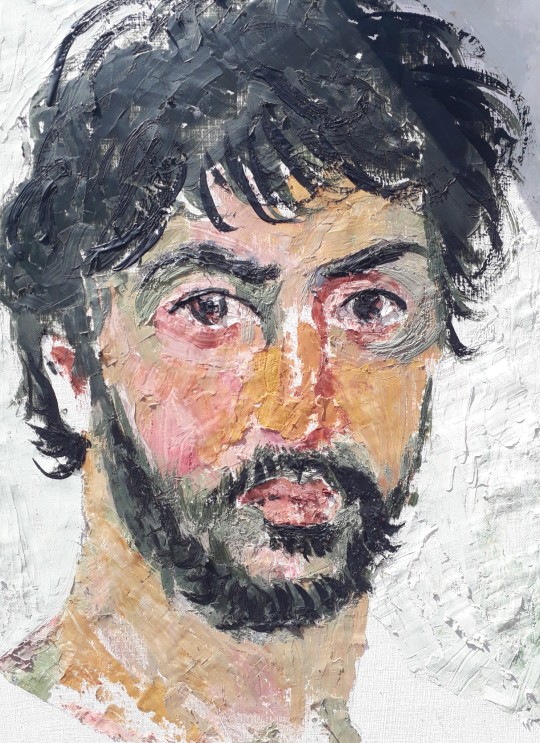
Wip encaustic fayum replica
#my art#encausticpainting#fayum portraits#experimental archeology#re-enactment#living history#beeswax painting#traditional art#greco egyptian#roman art
19 notes
·
View notes
Text
Fayum [Mummy] Portraits my beloved 💖
I am always thinking of you 💖💖
2 notes
·
View notes
Text
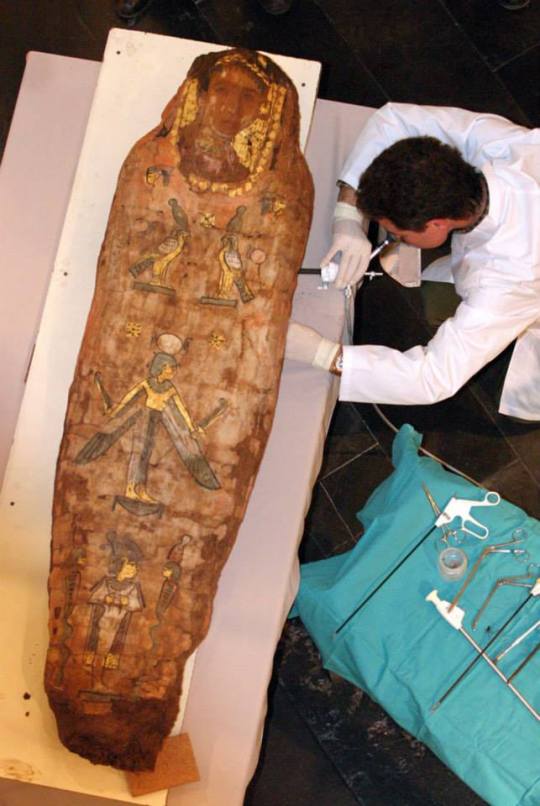
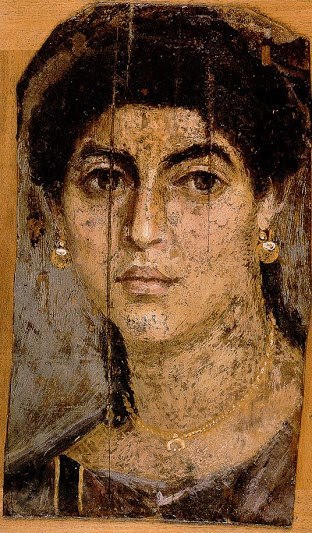


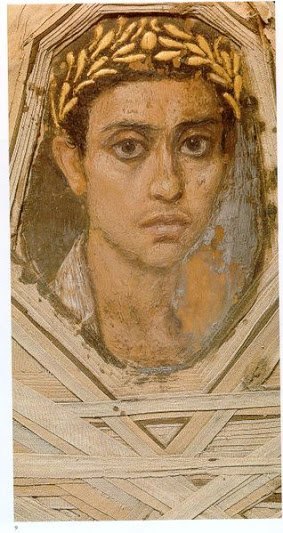
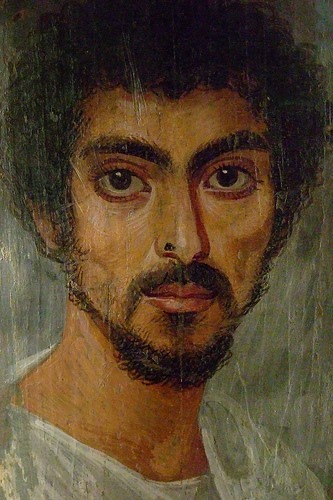
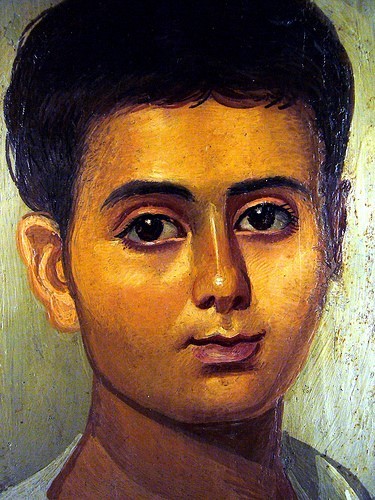
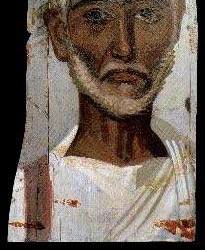
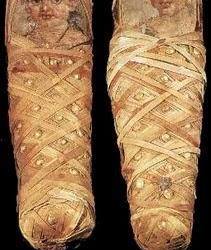
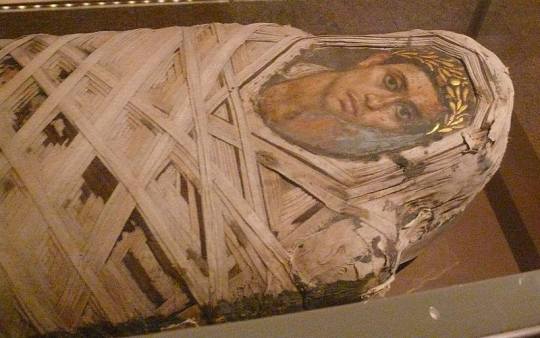
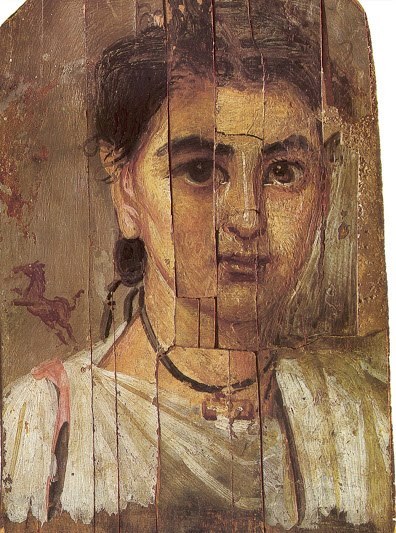
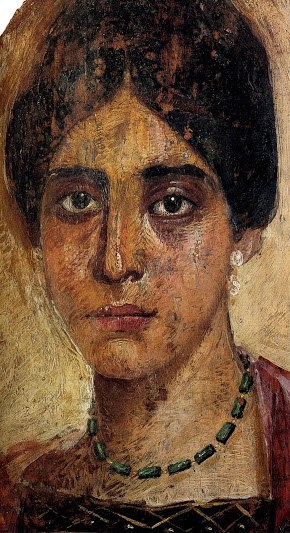

LOS RETRATOS DEL FAYUM
FAYUM MUMMY PORTRAITS
(Español / English)
Los retratos de El Fayum o retratos de momias de El Fayum (la mayoría de los retratos de esta tipología se han encontrado en esa región de Egipto) o simplemente, retratos de momias son términos modernos que se refieren a un tipo de retrato realista, pintado en tablas de madera que cubren el rostro de muchas momias de la provincia romana de Egipto. Pertenecen a la tradición de pintura en tabla, una de las formas de arte más respetadas en el mundo clásico. De hecho, los retratos de El Fayum son el único gran conjunto de arte de esa tradición que ha perdurado y que fue continuada en las tradiciones bizantina y occidental en el mundo posclásico, incluyendo la tradicional local de iconografía copta en Egipto. Los retratos de momia han sido encontrados a lo largo de todo Egipto, pero son más comunes en la región de Fayum, en particular, de Hawara a Antinoópolis, por ello el nombre; aunque, los "retratos de El Fayum" son considerados más como descripción estilística que geográfica.
------------------------------------------------------------------------------
FAYUM MUMMY PORTRAITS
Mummy portraits or Fayum mummy portraits (also Fayum mummy portraits) is the modern term given to a type of naturalistic painted portraits on wooden boards attached to mummies from the Coptic period. They belong to the tradition of panel painting, one of the most highly regarded forms of art in the Classical world. In fact, the Fayum portraits are the only large body of art from that tradition to have survived.
Mummy portraits have been found across Egypt, but are most common in the Faiyum Basin, particularly from Hawara and Antinoopolis, hence the common name. "Fayum Portraits" is generally thought of as a stylistic, rather than a geographic, description. While painted Cartonnage mummy cases date back to pharaonic times, the Faiyum mummy portraits were an innovation dating to the Coptic period on time of the Roman occupation of Egypt.[1]
They date to the Roman period, from the late 1st century BCE or the early 1st century CE onwards. It is not clear when their production ended, but recent research suggests the middle of the 3rd century. They are among the largest groups among the very few survivors of the highly prestigious panel painting tradition of the classical world, which was continued into Byzantine and Western traditions in the post-classical world, including the local tradition of Coptic iconography in Egypt.
4 notes
·
View notes
Text
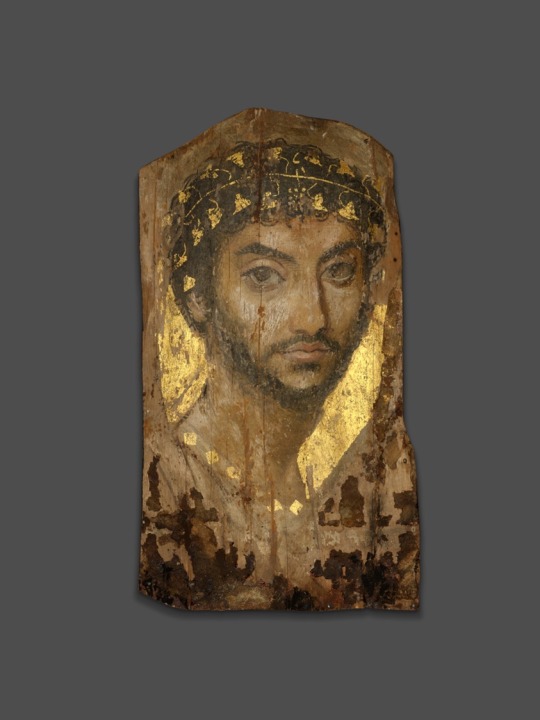


Fayum artists would have done numbers today. Like tell me this is not a pretty typical style of digital artists today?
1 note
·
View note
Text


This is what Egyptian women looked like 2000 years ago.
They are examples of "Fayum portraits" from Egypt, painted in first century AD. Likenesses of deceased people that were placed on their coffins.
1 note
·
View note
Text

~ Portrait of two brothers.
Period: Roman Period
Place of origin: Hawara, Fayum
Medium: Cedar wood with encaustic painting
#ancient#ancient art#history#museum#archeology#ancient egypt#roman#ancient history#archaeology#Fayum#Egyptian#egyptology#Egypt#portrait#portrait of two brothers#hawara
5K notes
·
View notes
Text
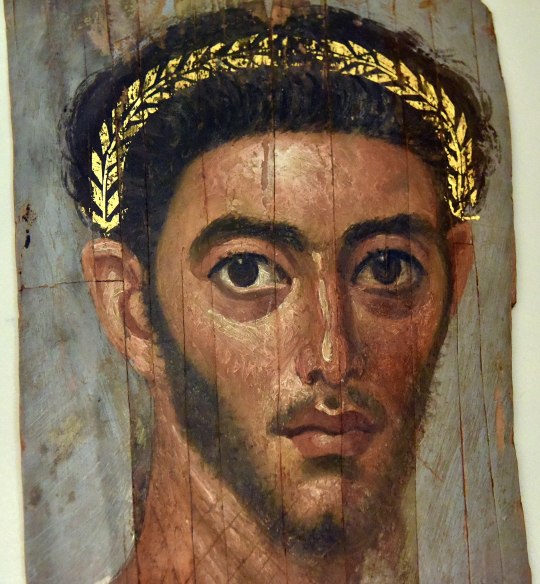
Egyptian mummy portrait (encaustic on wood) of a Roman soldier wearing a gold wreath. Artist unknown; ca. 130 CE (reign of the emperor Hadrian). Found at er-Rubayat in the Fayum; acquired in 1927 and now in the collection of the Altes Museum, Berlin. Photo credit: Osama Shukir Muhammed Amin FRCP/Wikimedia Commons.
#classics#tagamemnon#Ancient Rome#Roman Empire#Egypt#Ancient Egypt#Roman Egypt#Greco-Roman Egypt#portrait#portrait painting#mummy portrait#art#ancient art#Roman art#Ancient Roman art#Roman Imperial art#Egyptian art#Ancient Egyptian art#Romano-Egyptian art#Fayum#Altes Museum#encaustic#encaustic on wood
315 notes
·
View notes
Text

there's just something about them
Opal Age Tribune | Sun Edition / July-August 2023
I dream of Opal Age
#fayum mummies#roman egypt#egyptian#roman history#egyptian history#mummies#mummy portrait#zine#art#art history#roman art#ancient rome#ancient culture#ancient history#ancient civilizations#roman empire
54 notes
·
View notes
Text
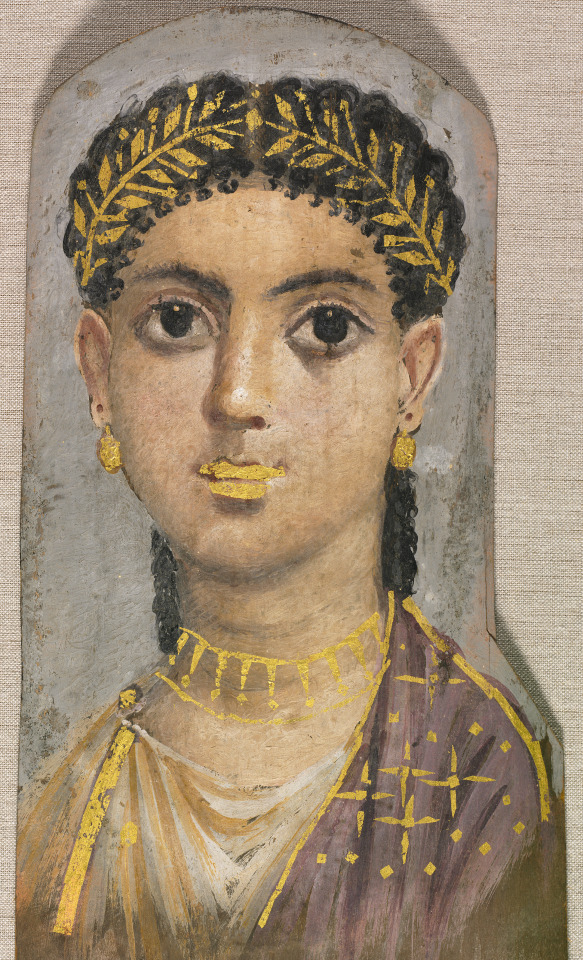
Mummy Portrait of a Young Roman Girl, ca.AD 25-37
Roman Egypt, late Tiberian
The Cleveland Museum of Art
#roman empire#egypt#roman egypt#fayum#fayum portrait#art#female portrait#female#portrait#funerary portrait#fine art#classical art#brunette#woman#black hair#black eyes#gold leaf#laurel crown#rome#tiberius
92 notes
·
View notes
Photo

Hello! If you are interested in Egyptology and the Fayum “mummy portraits,” do I have the virtual event for you! This event is on Zoom and completely free.
Face to Face: Conservation Research on 'Mummy Portraits' in the Detroit Area
February 28th at 6:30 PM
Virtual event on Zoom
Join us for an evening of conversation with conservators Caroline Roberts and Ellen Hanspach-Bernal who will be sharing their research on Egyptian "mummy" panel portraits at the Kelsey Museum of Archaeology and the Detroit Institute of Arts.
Register via link http://bit.ly/3JSJb7F
Speaker Profiles:
Caroline Roberts
Talk title: Reengaging with Roman Egyptian portraits and panel paintings through technical research at the Kelsey Museum
Bio: Caroline Roberts is an archaeological conservator and a graduate of the Winterthur / University of Delaware Program in Art Conservation. Carrie’s professional background includes post-graduate fellowships at the Kelsey Museum of Archaeology at the University of Michigan, the J. Paul Getty Museum, and the Metropolitan Museum of Art. Her research interests include the conservation of stone artifacts and architecture in museum and field settings, the characterization of ancient polychromy, and preventive conservation. Carrie’s conservation fieldwork experience includes seasons at Kaman-Kalehöyük in Turkey, Selinunte in Sicily, El-Kurru in Sudan, and Abydos in Egypt. She is a Professional Associate of the American Institute for Conservation.
Ellen Hanspach-Bernal
Talk title: Deconstructing an Ancient Egyptian Mummy Portrait at the Detroit Institute of Arts
Bio: Ellen Hanspach-Bernal is a 2006 graduate of the art conservation program at the Hochschule für Bildende Künste, Dresden. From 2006 to 2009 she was the Andrew W. Mellon Fellow in painting conservation at the Menil Collection in Houston, Texas. She has worked for Klassik Stiftung Weimar and for the Conservation Centre for the Museums of the City of Erfurt, Thüringen, in Germany. In 2015 she returned to the United States to work as Conservator of Paintings at the Detroit Institute of Arts.
Image credit: 25.2, Egyptian, Head of a Woman at the Detroit Institute of Arts
#fayum mummy portraits#fayum#Egypt#egyptology#Ancient Egypt#faiyum#Egyptian Archaeology#archaeology#faiyum mummy portraits
93 notes
·
View notes
Photo

Uknown
_
Fayum mummy-portrait of a lady, 54-68 AD, found in Hawara, Egypt, a site near the Fayum oasis. On display in 2009 exhibition "Roman Imperial Painting", Rome. (AP Photo/Pier Paolo Cito)
The Fayum portraits date to the Imperial Roman era, from the late 1st c. BC or the early 1st c. AD onwards. Recent research suggests their production ended in the middle of the 3rd c. AD. They are survivors of the panel painting tradition of the classical / Greco-Roman world, continued into Byzantine, Eastern Mediterannean, and Western traditions in the post-classical world, including the local tradition of Coptic iconography.
http://elogedelart.canalblog.com/archives/2009/09/26/15207626.html
https://historicaleve.com/ancient-faces-fayum-mummy-portraits/
https://realhistoryww.com/world_history/ancient/mummy_portraits_2.htm
https://en.wikipedia.org/wiki/Fayum_mummy_portraits
48 notes
·
View notes
Text
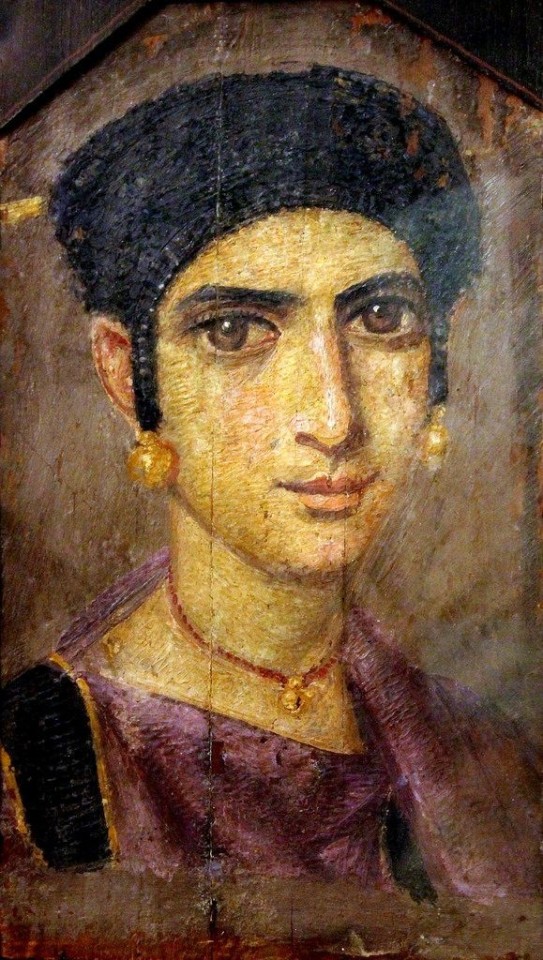
Fayum portrait by anonimous
21 notes
·
View notes